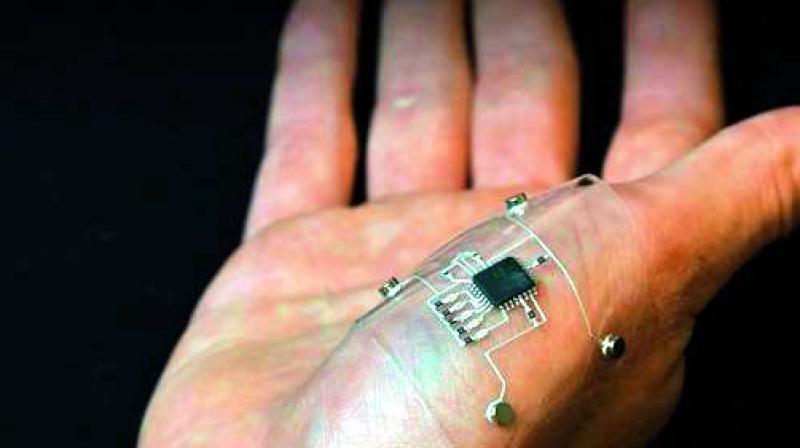The Rise of Flexible Hybrid Electronics
Flexible hybrid electronics (FHE) is an emerging area that combines the functionality of conventional rigid printed circuit boards with the mechanical versatility of flexible substrates. By integrating organic and inorganic materials at the micro and nano scale, FHE allows for electronics to be incorporated into virtually any surface or object. As these technologies continue to advance, FHE promises to usher in entirely new applications and revolutionize existing ones.
What are Flexible Hybrid Electronics?
Flexible hybrid electronics combine both rigid and flexible components onto flexible plastic or polymer based substrates. This allows traditional electronic components like processors, memory, sensors and batteries to be integrated with soft, form-fitting materials. Rather than being constrained to rigid, planar surfaces, electronics based on FHE can freely bend, twist, stretch and conform to complex 3D geometries.
At the core of FHE are flexible hybrid integrated circuits (Flex IC). Flex ICs incorporate active semiconductor components like transistors directly onto thin plastic or rubber sheets using printing, coating or deposition techniques. Surrounding the active components is a framework of interconnecting circuits which provide electrical pathways between different parts of the system. Additional passive components like resistors, capacitors and antennas can also be included to complete functional electronic circuits.
With these Flex ICs as building blocks, entire systems can be designed using a combination of rigid chips married to flexible supporting structures and interconnections. The result is electronics with the core functionality of traditional rigid PCBs but with a dramatically expanded sense of what physical forms they can naturally assume.
Potential Applications
Healthcare: Wearable biometric sensors and medical devices integrated directly into fabrics, bandages and implants. Continuous monitoring of vitals, minimally invasive procedures, drug delivery systems and more.
Interfaces: Flexible displays, keyboards and trackpads that conform to non-planar device surfaces like smartwatches, VR headsets, automotive dashboards and more. True multi-form-factor designs.
Internet of Things: Integrating low-cost sensors directly into objects and infrastructure for tracking, monitoring, safety and more. Embedding electronics seamlessly into smart packaging, industrial equipment and public spaces.
Consumer Electronics: Flexible screens, buttons and controls allowing devices to wrap around wrists, fold like papers and assume virtually any ergonomic shape. Revolutionary new form factors beyond the rectangular slab.
Advances in Key Materials and Processes
Flexible Hybrid Circuits: Significant progress in design and fabrication of flex ICs including development of high-res printable transistors, new barrier layers and interconnect technologies. Multi-layer circuits with performance comparable to rigid PCBs.
Dispensing Technologies: Advanced printing, deposition and micro-dispensing techniques now allow for precise, high-resolution patterning of liquids, pastes and nanoparticles directly onto flexible substrates under ambient conditions.
Conductive Inks: New generations of silver, copper and graphene inks provide highly conductive pathways either fired at low temperatures or cured by light/microwaves. Printed interconnects rivalling traditional etch technologies.
flexible/stretchable substrates: Advanced plastic, rubber and nanocomposite films serve as backgrounds for circuits, supplying mechanical give with high chemical/physical robustness. Substrates with tailored elastic properties for specific strain requirements.
Overcoming Barriers to Commercialization
Reliability Challenges: Ensuring flex ics and components don’t degrade or fail prematurely after repeated bending, stretching, crushing or environmental exposure. Developing self-healing strategies.
Mass Production Technologies: Scaling up laboratory fabrication techniques to produce flex ics and circuits at commercial volumes and speeds. Manufacturing platforms compatible with high-volume printing/coating manufacturing lines.
Component Integration: Effectively hybridizing rigid active components with supporting flex ics and interconnect structures while minimizing mechanical/electrical stresses between materials. Advanced assembly and packaging techniques.
Regulatory Standards: Defining benchmark testing protocols and component/system certification standards for reliability, biocompatibility, electrical safety etc. Ensuring regulatory compliance to bring products swiftly to market.
Market Adoption Strategies: Identifying and cultivating initial high-value application niches. Successful demonstration projects to showcase technology benefits and prove commercial/technical viability. Long-term planning for technology roadmap and evolution towards mainstream volumes.
Flexible hybrid electronics has significant potential to revolutionize how electronic products are designed and integrated into our world. As materials, processes and designs continue advancing, FHE will emerge from labs and start appearing in real world applications over the next five to ten years. Early commercial successes in targeted niches will help overcome remaining technology barriers and drive the broader adoption and maturation of this evolving field. Ultimately flexible hybrids promise to transform how we interact with and incorporate electronics throughout our daily lives.
Note:
1. Source: Coherent Market Insights, Public sources, Desk research
2. We have leveraged AI tools to mine information and compile it

